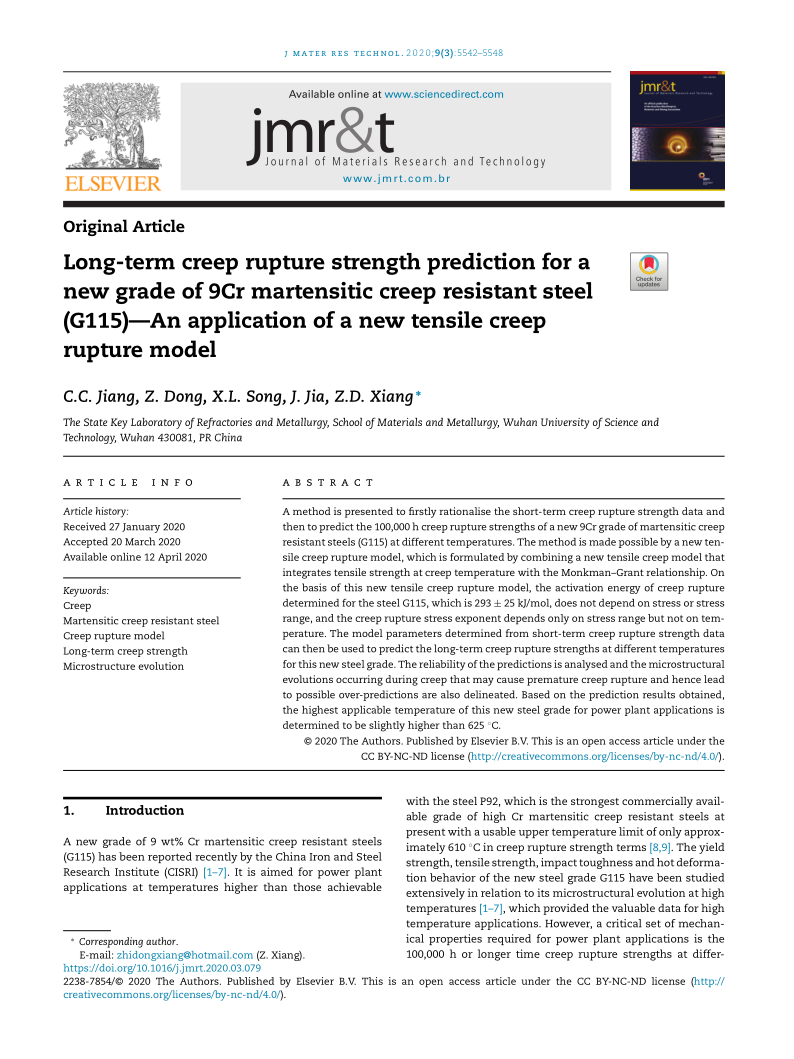A method is presented to firstly rationalise the short-term creep rupture strength data and then to predict the 100,000 h creep rupture strengths of a new 9Cr grade of martensitic creep resistant steels (G115) at different temperatures. The method is made possible by a new tensile creep rupture model, which is formulated by combining a new tensile creep model that integrates tensile strength at creep temperature with the Monkman–Grant relationship. On the basis of this new tensile creep rupture model, the activation energy of creep rupture determined for the steel G115, which is 293 ± 25 kJ/mol, does not depend on stress or stress range, and the creep rupture stress exponent depends only on stress range but not on temperature. The model parameters determined from short-term creep rupture strength data can then be used to predict the long-term creep rupture strengths at different temperatures for this new steel grade. The reliability of the predictions is analysed and the microstructural evolutions occurring during creep that may cause premature creep rupture and hence lead to possible over-predictions are also delineated. Based on the prediction results obtained, the highest applicable temperature of this new steel grade for power plant applications is determined to be slightly higher than 625 °C.
